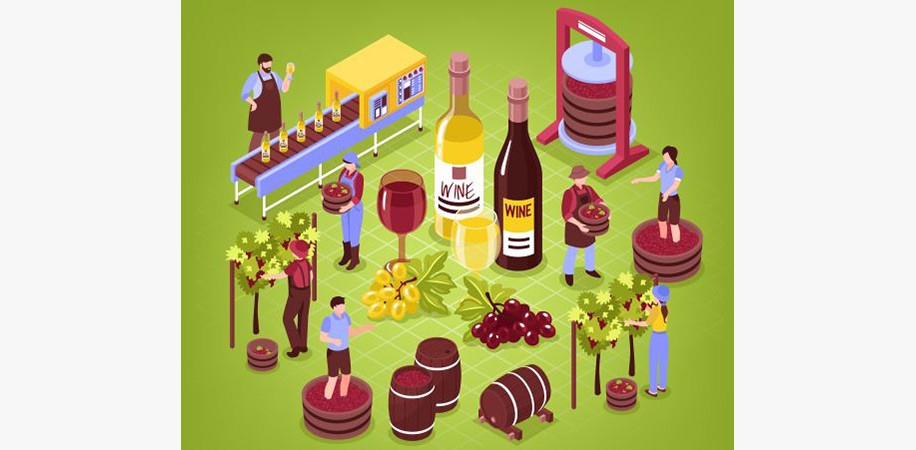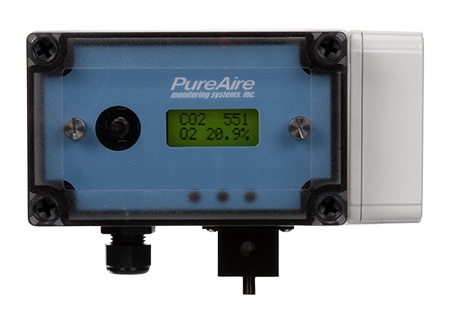Winemaking – A Must Read
- By : PureAire Monitoring Systems
- Posted on : May 07, 2019
- News Room
The art and science of winemaking have been around for thousands of years. Winemakers rely on their instincts, palates, and a thorough knowledge of the nuances involved in every stage of the winemaking process as they strive to achieve the flavors and qualities that they desire. Even a cursory overview of certain elements of the process underscores the critical role played by gases…from fermentation to first sip…in preserving the flavors created and nurtured by the winemaker’s skills.
From Harvesting to Fermentation
Since grapes do not continue to ripen after they have been picked, winemakers must carefully monitor the fruits when still on the vine, to ensure that they are harvested when flavor and ripeness are at peak levels. To protect the fragile grapevines, harvesting is typically done by hand, a laborious but important undertaking.
Once grapes are harvested, they are sorted and, sometimes, destemmed, and then crushed. At one time, grapes were crushed by hand (or, rather, by foot), but winemakers today crush them by using mechanical presses, which improves sanitation and the lifespan of the wine “must” (derived from the Latin phrase vinum mustum, or “young wine”), which is the industry term for the mixture of grape juice, seeds, and skins(and, in certain red wines, stems) that is the result of crushing.
The wine must is blanketed with nitrogen to reduce excessive levels of oxygen, which can oxidize the must, leaving it discolored and overly tart. For white wines, solids in the must are quickly removed after the crushing, in order to preserve the pale color of the juice. For reds, solids are left in the must, to create a more flavorful wine.
Next, the young wine is transferred to fermentation tanks. The fermentation process begins when yeast is introduced to the must. Most winemakers today use commercial yeasts, so they can control the predictability of the final product, though some winemakers (much like certain Belgian beermakers) continue to use the old-fashioned method of allowing wild yeasts to mix with the wine must. In either case, during fermentation, the yeast converts the grape sugars into alcohol. A byproduct of the fermentation process is carbon dioxide. Too much carbon dioxide in the fermentation area can displace oxygen and create potential health and safety risks to employees.
The fermentation process can take anywhere from ten days to a month or more. To maintain sweetness, some wines are not allowed to fully ferment, which leaves higher levels of sugar in the wine.
Once fermentation is complete, the wine is clarified or filtered, in order to remove residual solids and any other undesired particles. At that point, the fermented wine is transferred into aging vessels, most often either stainless-steel tanks or oak barrels.
Aging and Bottling
Exposure to oxygen can negatively impact a wine’s flavor, longevity, and overall quality. Inert gases, including argon, nitrogen, and carbon dioxide, may be used to flush oxygen out of the environment during storage, to help preserve the flavor and quality of the wine.
Flushing fermentation vessels, aging tanks, barrels, and bottles with an inert gas before filling with wine helps prevent oxidation, which is much dreaded by winemakers, as it produces discoloration, unpleasant aromas, and off-flavors reminiscent of vinegar.
Oxygen Monitors Can Protect Winemakers and Their Employees
The same property–oxygen displacement –that makes inert gases ideal for winemaking, can be deadly if gas leaks from the supply lines or storage containers, or if there is a dangerous buildup of carbon dioxide during the fermentation stage. Employees could suffocate from breathing oxygen-deficient air and, since inert gases lack color, and odor, there is no way, absent appropriate monitoring, to determine if there has been a leak.
PureAire Monitoring Systems’ line of oxygen and dual oxygen/carbon dioxide monitors offer thorough air monitoring, with no time-consuming maintenance or calibration required. A screen displays current oxygen levels for at-a-glance reading by employees, who derive peace of mind from the monitor’s presence and reliable performance.
Built with zirconium oxide sensor cells and non-dispersive infrared sensor (NDIR)cells, to ensure longevity, PureAire O2 and O2/CO2 monitors can last, trouble-free, for over 10 years under normal operating conditions.
As such, the use of PureAire’s monitors will enable winemakers, in a cost-effective manner, to preserve both the quality of their wines and the well-being of their employees.




